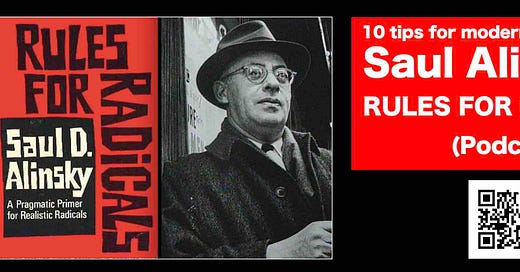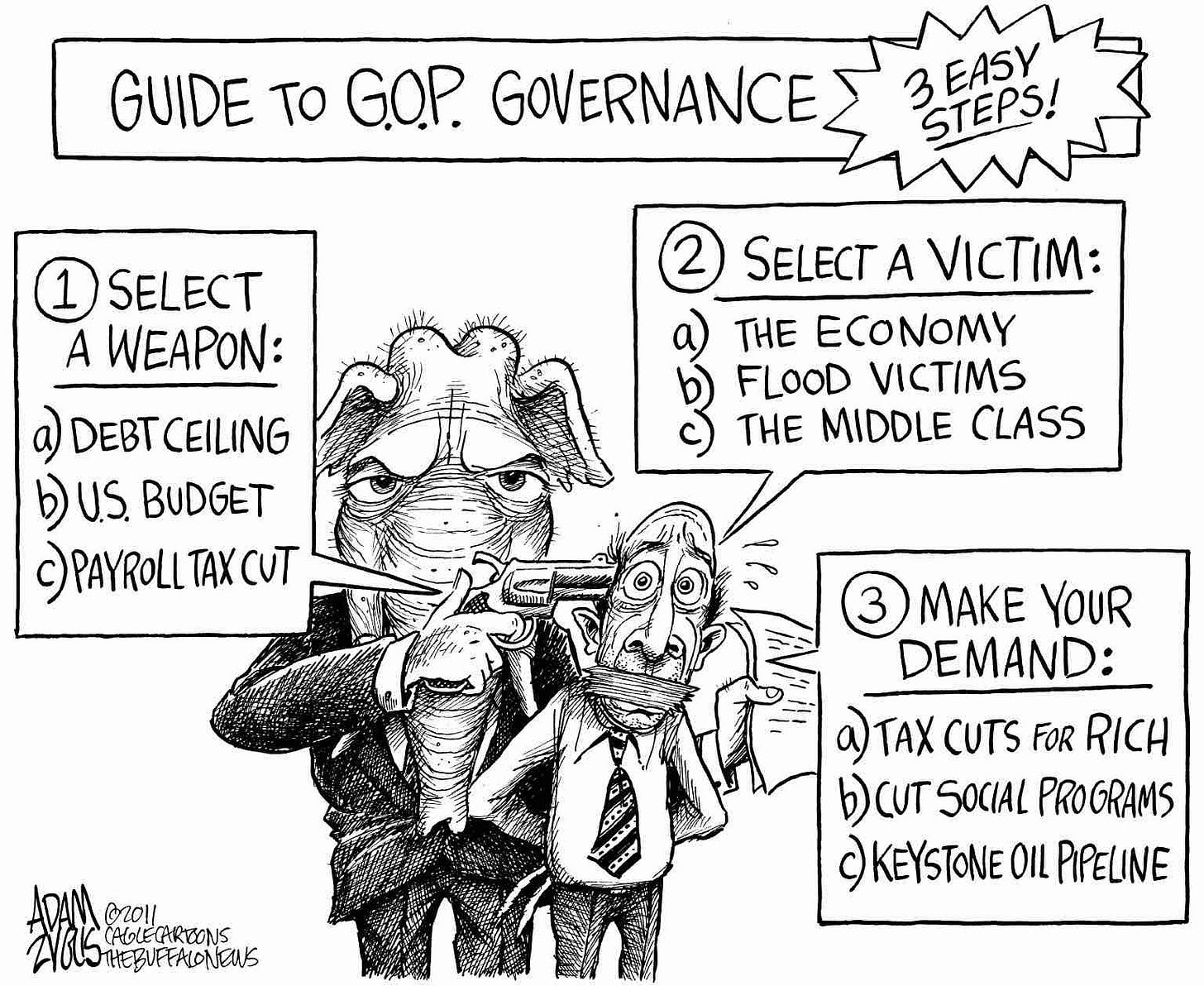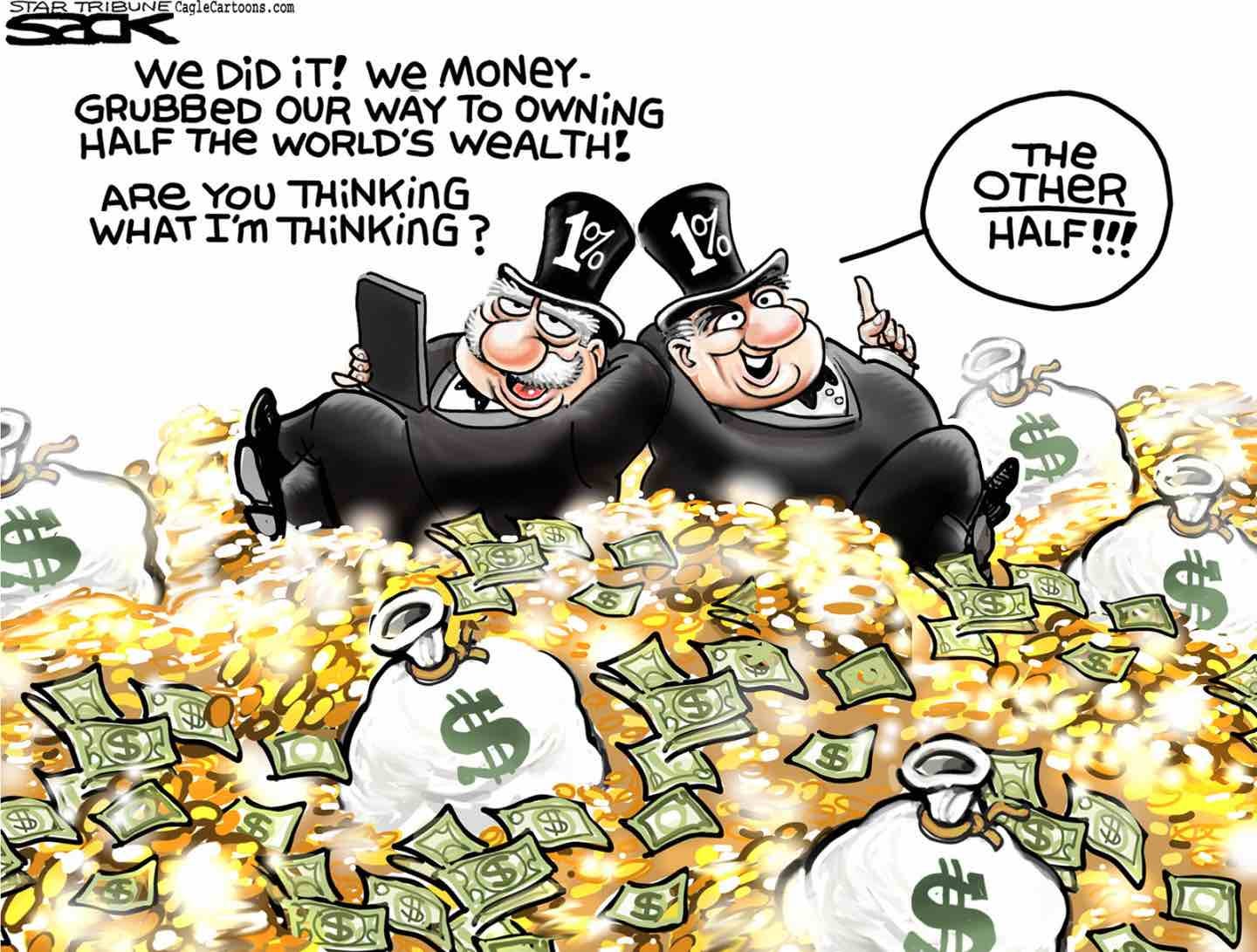Rules for Radicals by Saul Alinsky's has influenced generations of community organizers for decades. His tactics are just as relevant tomorrow. He explains how the have-nots can push back against billionaires and corporate greed through grassroots activism and community organizing.
Alinsky’s tactics include “ridicule is man’s most potent weapon” or “power is not only what you have, but what the enemy thinks you have.” They offer a set of organizational practices, an approach to building power at the level of local communities. “Don’t talk ideology, just issues. No electoral politics. Build organizations, not movements… Focus on neighborhoods and on concrete, winnable goals.”
Billionaire's wage class war
Power organizing tactics
Alinksy offers a list of rules of "power tactics," meant as basic guidelines for organizers and community activists:
Power is not only what you have but what the enemy thinks you have.
Never go outside the experience of your people.
Wherever possible go outside of the experience of the enemy.
Make the enemy live up to their own book of rules.
Ridicule is man's most potent weapon.
A good tactic is one that your people enjoy.
A tactic that drags on too long becomes a drag.
Keep the pressure on.
The threat is usually more terrifying than the thing itself.
The major premise for tactics is the development of operations that will maintain a constant pressure upon the opposition.
If you push a negative hard and deep enough it will break through into its counterside.
The price of a successful attack is a constructive alternative.
Pick the target, freeze it, personalize it, and polarize it.
Haves and Have-Nots
"Society has three groups: the Haves, the Have-Nots, and the Have-a-Little, Want Mores. On top are the very few Haves with power, money, food, security, and luxury. They suffocate in their surpluses while the Have-Nots starve. The Haves want to keep things as they are and are opposed to change. They are cold and determined to freeze the status quo. The Haves always justify the status quo. Religious, economic, social, political groups attack demands for change as immoral, fallacious and against God, country, and mother.
On the bottom are the most people. Have-Nots. They are chained together by the common misery of poverty, rotten housing, disease, ignorance, political impotence, and despair. Their jobs pay the least and they are deprived in all areas basic to human growth. Caged by color, physical or political, they are barred from an opportunity to represent themselves in the politics of life. The Haves want to keep; the Have-Nots want to get. Many Have-Nots have given up and resigned to their fate. But there are glowing embers of hope which can be fanned by the building of means of obtaining power. The power of the Have-Nots rests with their numbers." - Rules For Radicals
TakeAway: Learn Saul Alinsky's rules for activism and organizing.
Deepak
DemLabs
DISCLAIMER: ALTHOUGH THE DATA FOUND IN THIS BLOG AND INFOGRAPHIC HAS BEEN PRODUCED AND PROCESSED FROM SOURCES BELIEVED TO BE RELIABLE, NO WARRANTY EXPRESSED OR IMPLIED CAN BE MADE REGARDING THE ACCURACY, COMPLETENESS, LEGALITY OR RELIABILITY OF ANY SUCH INFORMATION. THIS DISCLAIMER APPLIES TO ANY USES OF THE INFORMATION WHETHER ISOLATED OR AGGREGATE USES THEREOF.








A great book on leadership when you do not have the power, or think you don’t have the power. So many good examples.